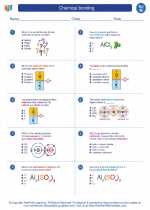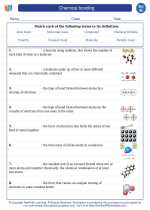Chemical bonding -> biopharmaceuticals
Biopharmaceuticals
Biopharmaceuticals, also known as biologics, are medicinal products derived from living organisms or their cells through biotechnological processes. These products are used for the prevention, diagnosis, and treatment of various diseases and medical conditions.
Characteristics of Biopharmaceuticals
- Complex molecules: Biopharmaceuticals are large, complex molecules such as proteins, antibodies, nucleic acids, and other cellular components.
- Specific targeting: They are designed to target specific molecules or pathways in the body, providing more targeted and personalized treatment options.
- Production process: Biopharmaceuticals are produced using living cells, often through recombinant DNA technology, which allows for the production of therapeutic proteins with precise structures and functions.
- Regulation: Due to their complexity, biopharmaceuticals are subject to strict regulatory processes to ensure safety, efficacy, and quality.
Types of Biopharmaceuticals
There are several types of biopharmaceuticals, including:
- Monoclonal antibodies
- Recombinant proteins
- Vaccines
- Gene therapies
- Cell therapies
Applications of Biopharmaceuticals
Biopharmaceuticals have diverse applications in the field of medicine, including:
- Treatment of cancer, autoimmune diseases, and infectious diseases
- Prevention and management of chronic conditions
- Regenerative medicine and tissue engineering
- Personalized medicine and targeted therapies
Challenges and Future Directions
Despite their potential, biopharmaceuticals also present challenges such as high production costs, complex manufacturing processes, and the need for specialized storage and transportation. However, ongoing research and technological advancements continue to drive the development of new and innovative biopharmaceutical products.
Study Guide
To understand biopharmaceuticals, it's important to study the following key areas:
- Biotechnological processes involved in biopharmaceutical production
- Structural and functional characteristics of different types of biopharmaceuticals
- Regulatory requirements and quality control in biopharmaceutical development
- Clinical applications and therapeutic uses of biopharmaceuticals
- Current challenges and future trends in biopharmaceutical research and development
By mastering these aspects, you can gain a comprehensive understanding of the science and technology behind biopharmaceuticals, as well as their significance in modern medicine.
.◂Science Worksheets and Study Guides Eighth Grade. Chemical bonding

 Worksheet/Answer key
Worksheet/Answer key
 Worksheet/Answer key
Worksheet/Answer key
 Worksheet/Answer key
Worksheet/Answer key
 Vocabulary/Answer key
Vocabulary/Answer key
